Automatically create
Multiple Choice Polls
from your
Google Meet
chat
for
Computer Science Lecture
Used by 4,000+ universities, businesses, and streamers
What does StreamAlive's
Multiple Choice Polls
do?
Say hello to a new era of live audience engagement during your Computer Science lectures on Google Meet. StreamAlive transforms the interactions from your session's chat into visually engaging Multiple Choice Polls, bringing your lecture to life in real-time. Forget about the hassle of directing students to different platforms or managing split screens. What your students input directly into the chat is seamlessly turned into tailored polls, enhancing their learning experience with immediate interactivity. For instance, gauge their understanding by asking "Which data structure is most efficient for sorting operations?", spark discussions with "What's your favorite programming language?", or check comprehension with "Who developed the Python programming language?" These interactive elements not only enrich your teaching but also empower your students to participate actively during the online class, making every session more impactful and engaging.
StreamAlive revolutionizes live audience engagement for Google Meet, especially for educators like Computer Science lecturers, by simplifying the process of using Multiple Choice Polls in your sessions. Forget about dealing with troublesome codes, cumbersome embeds, or complicated URLs. Instead, you can seamlessly generate and manage Multiple Choice Polls right from the live chat during your lectures. This intuitive feature allows your students to interact and participate effortlessly, transforming your digital classroom into an interactive and engaging space. Whether you're conducting an in-depth algorithm demo or a theory discussion, StreamAlive empowers you to make your lectures both interactive and insightful without any technical hassle.

* StreamAlive supports hybrid and offline audiences too via a mobile-loving, browser-based, no-app-to-install chat experience. Of course, there’s no way around a URL that they have to click on to access it.
StreamAlive can create
Multiple Choice Polls
for all event types


How you can use
Multiple Choice Polls
Once your audience gets a taste for
Multiple Choice Polls
created from
the live chat, they’ll want to see them used more often.
Assessing Understanding of Algorithms
Implement Multiple Choice Polls to check students' comprehension of algorithms by asking questions like, 'Which of the following algorithms has the best time complexity for searching?' This allows real-time feedback on what concepts might need more clarification.
Stimulating Interest in Programming Languages
Engage students by asking which programming language they are most interested in learning or currently using. Polls can include choices like Python, Java, C++, encouraging students to express their preferences or resonate with specific topics.
Testing Knowledge on Programming History
You can use polls to test students' knowledge about the history of computer science by posing questions like, 'Who is known as the father of computer science?', making the learning process fun and interactive.
Multiple Choice Polls
can be created by
anyone running a
Google Meet
session
.svg)
.svg)
.svg)
.svg)
Powered by the chat.
StreamAlive seamlessly integrates with Google Meet’s chat, transforming real-time audience responses into dynamic Multiple Choice Polls. This innovative feature elevates live audience engagement by streamlining input collection and instant poll creation, fostering an interactive and participatory classroom environment.
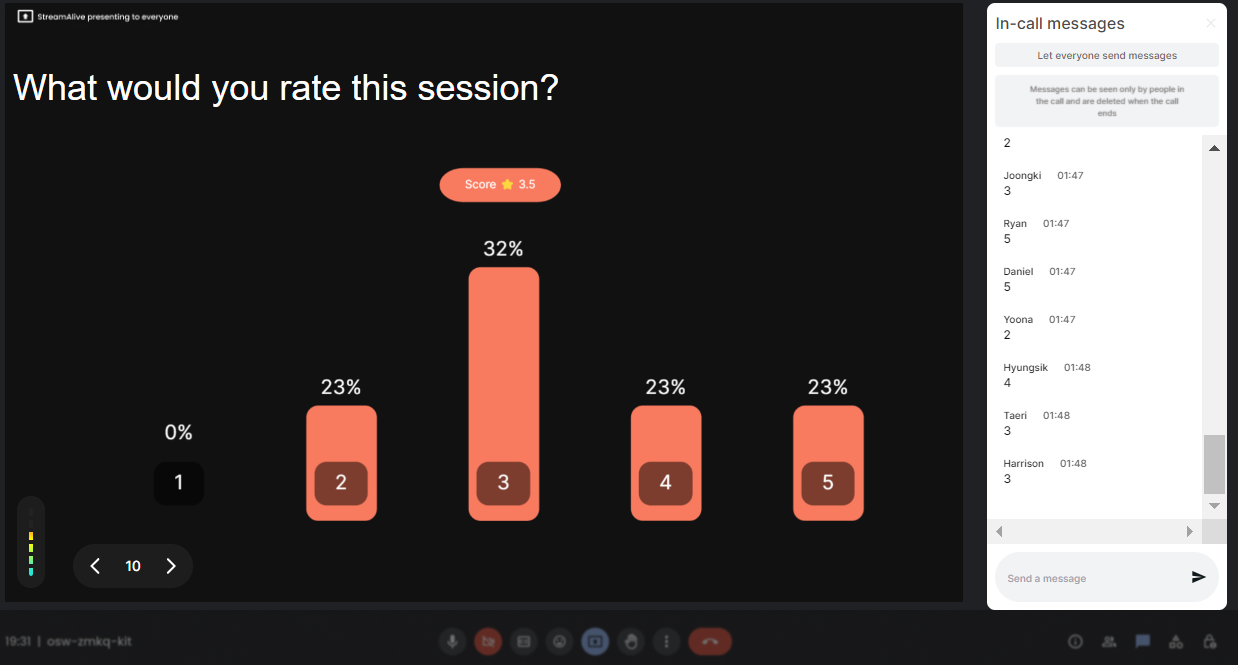
Run regular polls, multiple choice polls, or open ended polls.
Whether you need to assess understanding, encourage discussion, or gather open-ended feedback, StreamAlive supports regular, multiple choice, and open-ended polls. This flexibility allows educators to design the most suitable assessments, enhancing both student interaction and insight gathering.
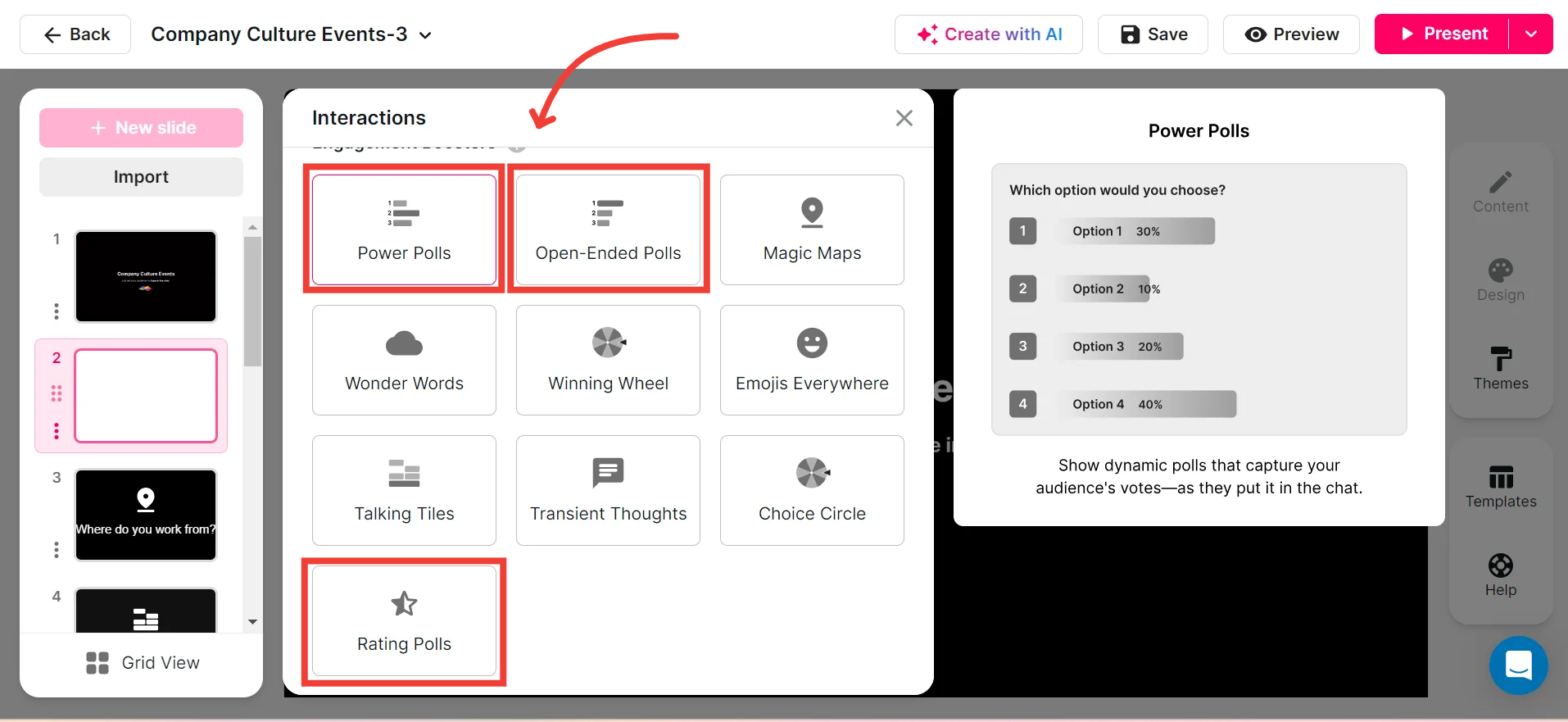
Create unlimited Multiple Choice Polls for your live sessions.
With StreamAlive, the limitations on polling are gone. Educators can create as many Multiple Choice Polls as needed, ensuring comprehensive coverage of topics and real-time feedback during their Computer Science lectures, thereby enriching live audience engagement.
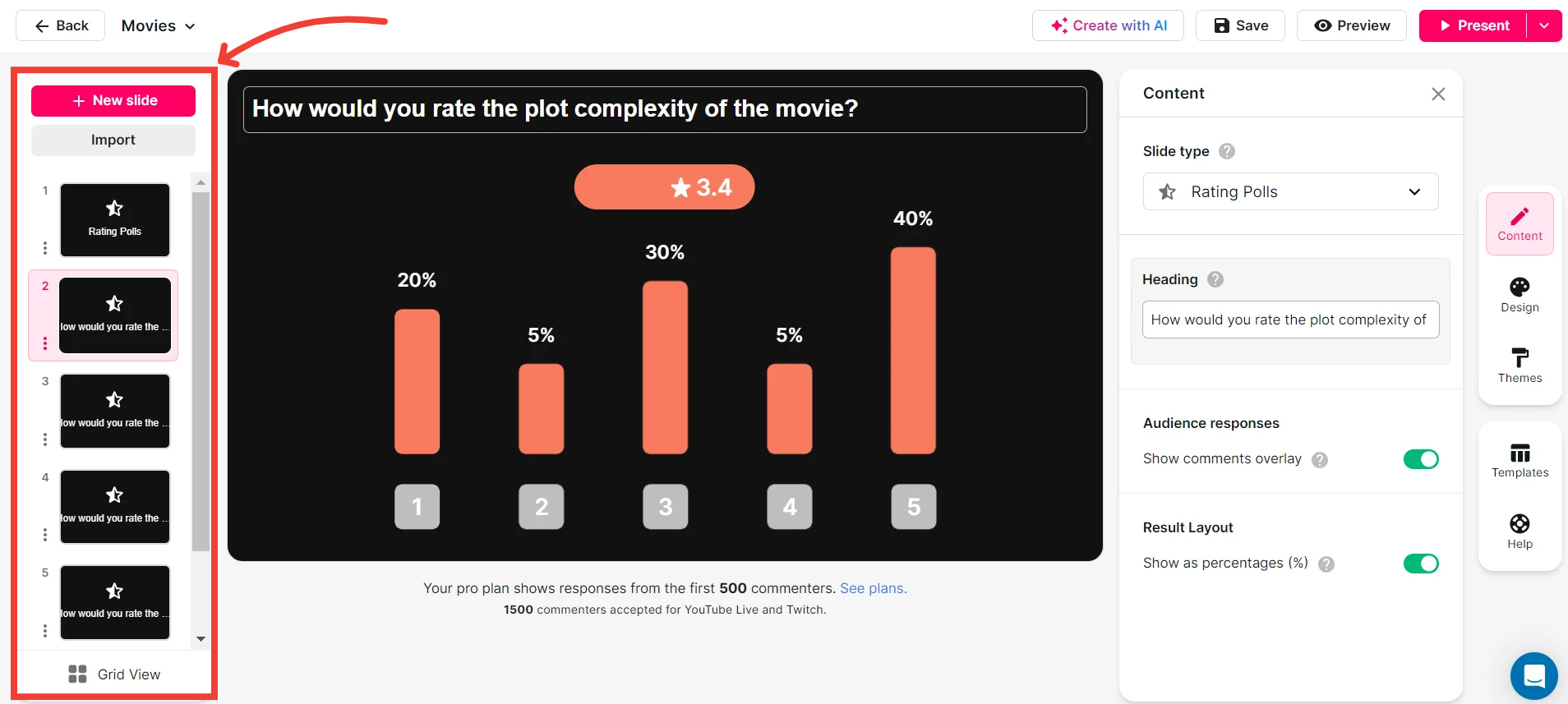
Use StreamAlive's browser-based chat to make voting anonymous.
Anonymity in voting can foster more honest and uninfluenced responses. StreamAlive’s browser-based chat ensures that all polls can be conducted anonymously, empowering students to voice their opinions freely and participate in live sessions without reservation.
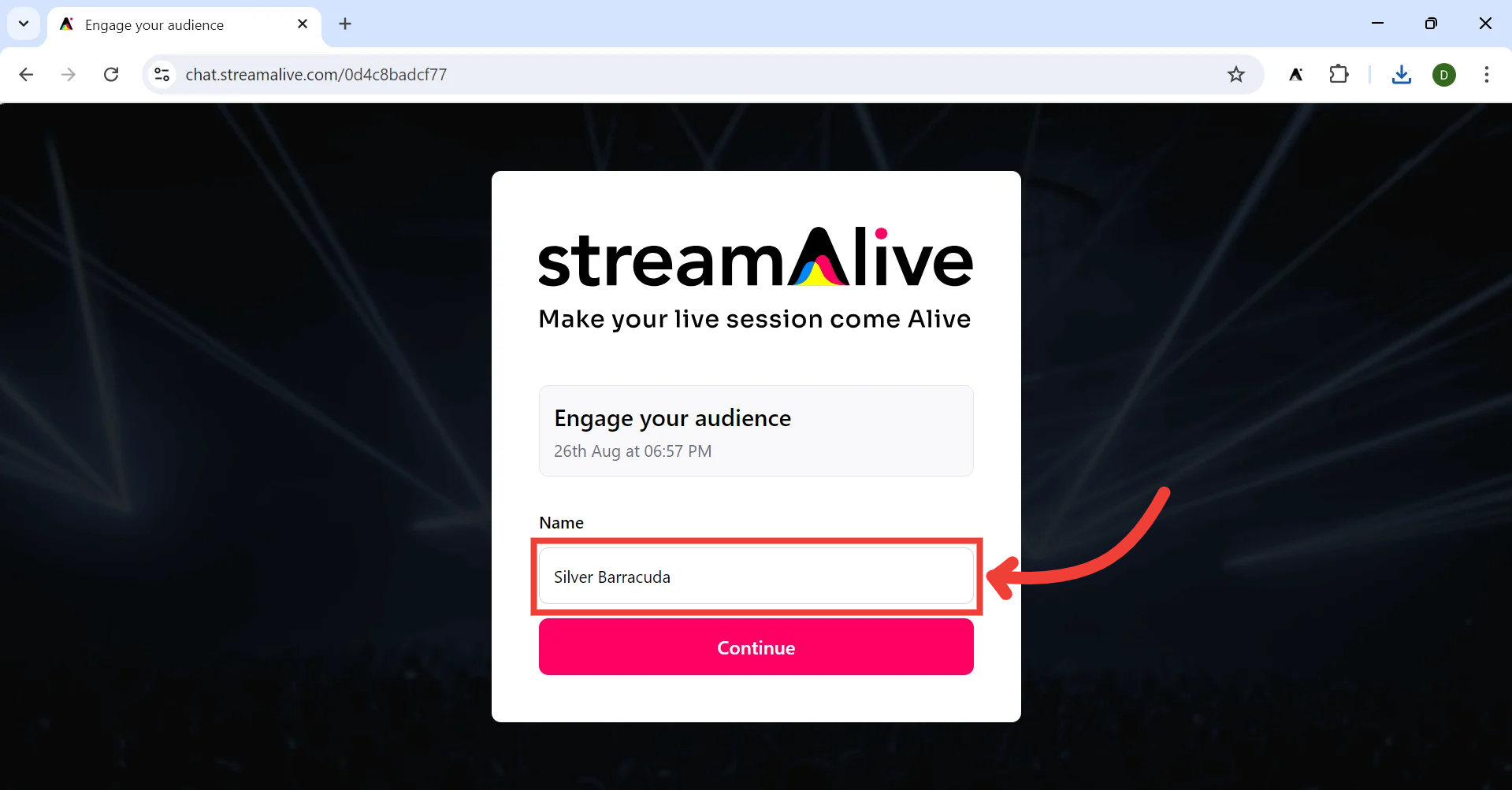
Customize how your Multiple Choice Polls look.
Aesthetics and clarity matter in education. StreamAlive provides the option to customize poll appearance, aligning with your lecture theme or institutional colors, and making polls not only a tool for engagement but also a seamless part of your pedagogical style.
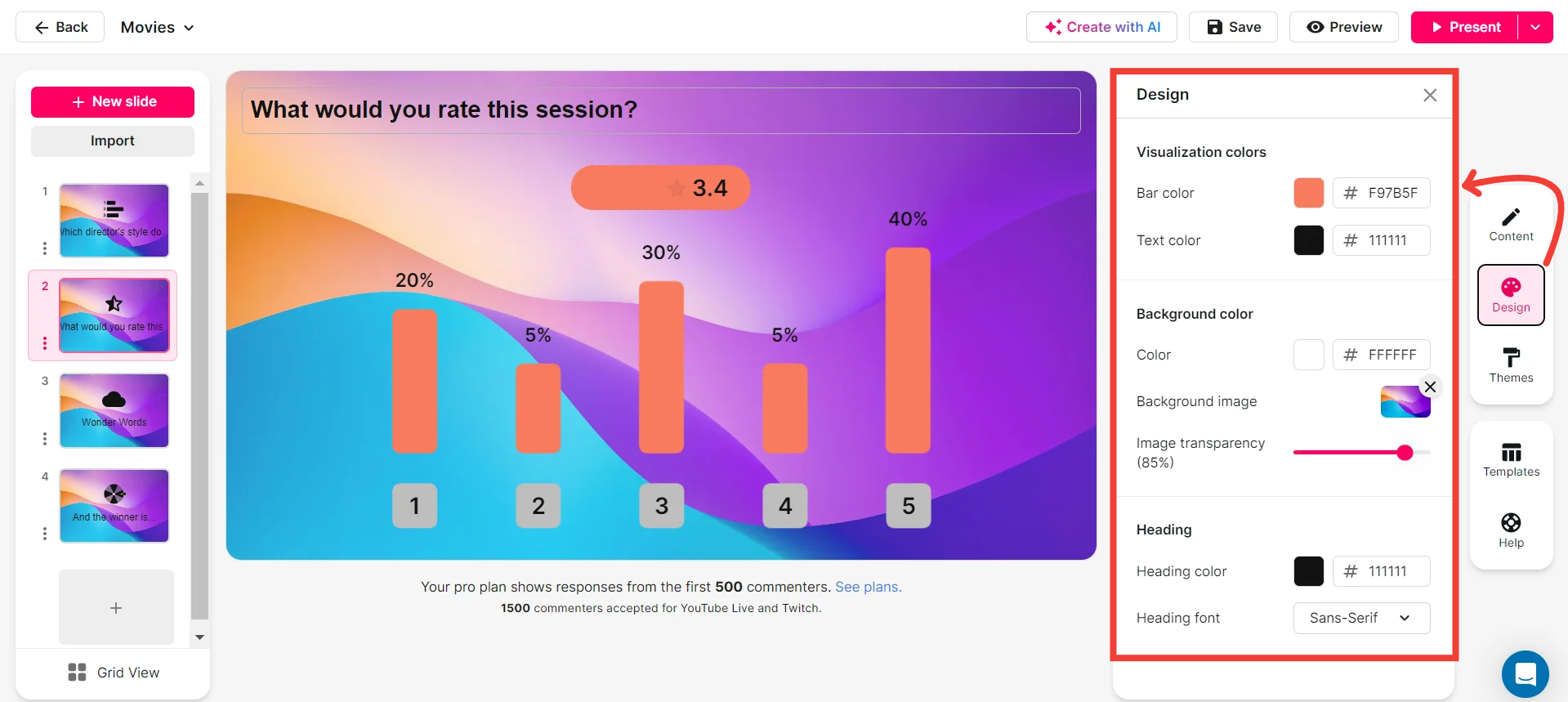
Save Multiple Choice Polls results and see who voted.
Record keeping and analysis of poll results are streamlined with StreamAlive. Educators can save the results of Multiple Choice Polls, and track participant engagement by seeing who voted, enabling a reflective approach to enhance future teaching strategies and improve educational outcomes.

Chat-powered
Multiple Choice Polls
isn't the only thing
you can do with StreamAlive
Bring your audience’s locations to life on a real-time map — as they put it in the chat.
Create unlimited live polls where the audience can vote directly from the chat box.
Spin a wheel of names or words and let the spinner wheel pick a winner.
Add a bit of Vegas to your live sessions and award prizes to active users in the chat.
StreamAlive automatically saves any link shared in the chat to be shared afterwards.
Call-out your audience's chats in cool thought bubbles for everyone to see in.
Unleash a storm of emojis to find out how or what your audience is thinking.
Your audience's thoughts and opinions visualized in a cascading sea of colorful tiles.
Visualize every word (profanity excluded) of your audience's chat comments.
StreamAlive automatically sniffs out audience questions and collates them for the host.
Bring your audience’s locations to life on a real-time map — as they put it in the chat.
Bring your audience’s locations to life on a real-time map — as they put it in the chat.
Bring your audience’s locations to life on a real-time map — as they put it in the chat.
Bring your audience’s locations to life on a real-time map — as they put it in the chat.
Bring your audience’s locations to life on a real-time map — as they put it in the chat.
Bring your audience’s locations to life on a real-time map — as they put it in the chat.
Bring your audience’s locations to life on a real-time map — as they put it in the chat.
Bring your audience’s locations to life on a real-time map — as they put it in the chat.
Bring your audience’s locations to life on a real-time map — as they put it in the chat.
Bring your audience’s locations to life on a real-time map — as they put it in the chat.
Bring your audience’s locations to life on a real-time map — as they put it in the chat.
Bring your audience’s locations to life on a real-time map — as they put it in the chat.
Bring your audience’s locations to life on a real-time map — as they put it in the chat.
Bring your audience’s locations to life on a real-time map — as they put it in the chat.
Bring your audience’s locations to life on a real-time map — as they put it in the chat.
Bring your audience’s locations to life on a real-time map — as they put it in the chat.
Bring your audience’s locations to life on a real-time map — as they put it in the chat.
Bring your audience’s locations to life on a real-time map — as they put it in the chat.
Bring your audience’s locations to life on a real-time map — as they put it in the chat.
Bring your audience’s locations to life on a real-time map — as they put it in the chat.
Bring your audience’s locations to life on a real-time map — as they put it in the chat.
Bring your audience’s locations to life on a real-time map — as they put it in the chat.
Bring your audience’s locations to life on a real-time map — as they put it in the chat.
Bring your audience’s locations to life on a real-time map — as they put it in the chat.
Bring your audience’s locations to life on a real-time map — as they put it in the chat.
Bring your audience’s locations to life on a real-time map — as they put it in the chat.
Bring your audience’s locations to life on a real-time map — as they put it in the chat.
Bring your audience’s locations to life on a real-time map — as they put it in the chat.
Bring your audience’s locations to life on a real-time map — as they put it in the chat.
Bring your audience’s locations to life on a real-time map — as they put it in the chat.
Bring your audience’s locations to life on a real-time map — as they put it in the chat.
Bring your audience’s locations to life on a real-time map — as they put it in the chat.
Bring your audience’s locations to life on a real-time map — as they put it in the chat.
Bring your audience’s locations to life on a real-time map — as they put it in the chat.
Bring your audience’s locations to life on a real-time map — as they put it in the chat.
Bring your audience’s locations to life on a real-time map — as they put it in the chat.
























.png)







.svg)
.svg)
.svg)
.svg)
.svg)